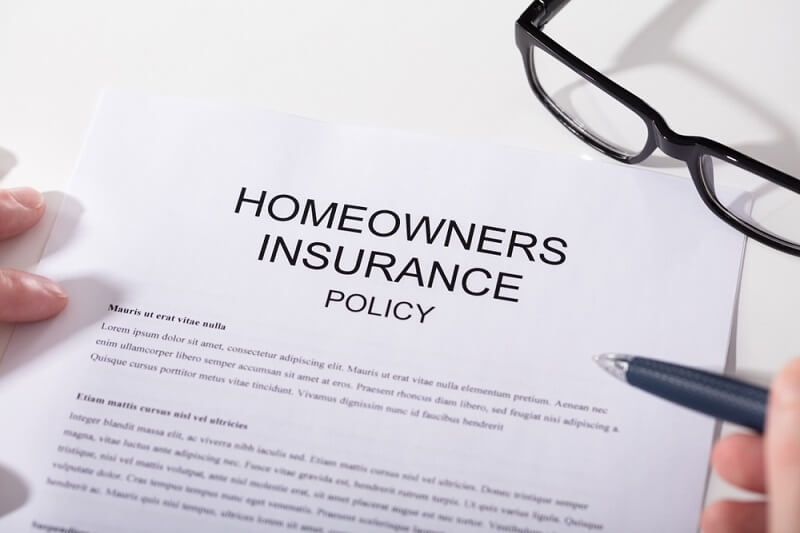
When defending your most considerable funding, knowing precisely what house proprietors' insurance covers is essential. From surprising fires and storms to robbery and liability claims, homeowners' insurance provides monetary safety against several dangers. It also lets you recognize the perils covered by home policy, replacement cost vs ACV explained, potential exclusions in homeowners' coverage, and how to deal with the water damage claims process efficiently. Let’s dive deep into every critical element so you can stay steady and make knowledgeable insurance alternatives.
Homeowners insurance is an economic safety net that protects you from losses due to unexpected events affecting your home or assets. It usually consists of coverage for the form, personal assets, liability, and further dwelling fees if your private home is uninhabitable. But statistics on what residential property owners' insurance covers enable you to avoid surprises even when filing a claim. It ensures you’re privy to the perils covered by home policy and understand the limitations beneath the exclusions in the owner's coverage segment.
Knowing the perils included via domestic coverage is crucial for understanding the scope of protection. Standard house proprietors insurance (HO-3 coverage) covers your private home against many named perils, including:
These represent the maximum typical dangers faced by owners. However, no longer is each occasion automatically blanketed. While a coverage can experience entire, reviewing exclusions in homeowners coverage ensures you understand what isn’t included. For example, famous rules exclude flood and earthquake harm until you purchase greater insurance.
A key takeaway is that what house owners' insurance covers is based on your precise coverage type and any endorsements you add. Customizing insurance can make all the difference in a catastrophe.

Every coverage plan has barriers. Recognizing exclusions in homeowners' insurance can save you economic and emotional misery later. Common exclusions include:
Understanding those exclusions in residence proprietors insurance permits deciding whether or not to purchase add-on coverage. For example, earthquake or flood riders can decorate what residents own
Water damage is among the most common and expensive claims filed under homeowners' insurance. However, now not all water harm qualifies for coverage. Knowing the water damage claims way guarantees you get the manual you want at the same time as catastrophic events.
Your coverage will generally cover water damage if it’s sudden and unintended, like a burst pipe or overflowing washing machine. The water damage claims gadget starts with documenting the source and extent of the damage.
If the harm is caused by awful preservation, gradual leaks, or groundwater seepage, it’s typically excluded. That’s why record exclusions in homeowner's coverage are critical before assuming all water-associated problems are covered.
Taking these steps correctly ensures that your water damage claims process goes smoothly and that you get truthful reimbursement under what your homeowner's coverage covers.
One of the biggest misconceptions about what homeowners' insurance covers concerns natural disasters. While some sports are protected, others require separate protection. Knowing your natural disaster coverage facts allows you to plan in advance.
Most rules encompass coverage for:
These activities are part of the perils included through home coverage, ensuring your house and assets are covered from common natural dangers.
Unfortunately, floods and earthquakes are excluded except you purchase extra insurance. Many homeowners mistakenly recollect the ones that fall under herbal catastrophe coverage, but they require separate tips through federal or private insurers.
In summary, customizing your homeowner's insurance ensures that what house owners' coverage covers aligns with the dangers in your vicinity.
If you've experienced a covered loss, how your insurance company will reimburse you depends on whether you have replacement cost or actual cash value (ACV) coverage. Understanding replacement cost vs ACV can help you make better financial decisions.
Replacement price insurance will pay the cost to rebuild or update your damaged assets with substances of a comparable type and quality, without deducting for depreciation. This method, you bought sufficient finances to repair your property to its previous condition.
ACV coverage pays the best depreciated fee for your broken property. For instance, if a ten- to 12-month-old roof is damaged, you’ll get reimbursement for its current market value, not what it'd cost to put in a new one.
Choosing between the two impacts what house owners' coverage covers and your financial recovery after a loss. Replacement rate coverage normally charges more fees but offers greater peace of mind. Understanding replacement price vs ACV defined guarantees you choose insurance aligned with your financial capability and risk tolerance.
Liability protection is a vital part of what homeowner's insurance covers. It protects you if a person is injured on your property or if you, by coincidence, cause harm to any other person.
You could face thousands of dollars in crook and medical expenses without legal responsibility coverage. This is why information exclusions in homeowner's insurance—like harm from intentional acts—are critical to avoid coverage surprises.
Imagine your house becomes uninhabitable after a fire. How do you pay for inn remains or food? That’s where loss of use insurance comes in. It’s a critical factor in what homeowners' insurance covers, ensuring you don’t face economic trouble at the same time renovations are underway.
It’s a protection net that gives stability inside the path of hard times, reinforcing the significance of reviewing your perils included via domestic coverage for completeness.
These steps enhance the effectiveness of what residential owners' insurance covers and ensure smoother claim settlements.
Understanding what homeowners' coverage covers is essential to shielding your property and assets. You can make informed selections, avoid surprising costs, and ensure proper safety by understanding common perils, policy exclusions, and natural catastrophe insurance. Reviewing your coverage frequently and addressing gaps will keep your home stable and give you peace of mind for the future.
This content was created by AI